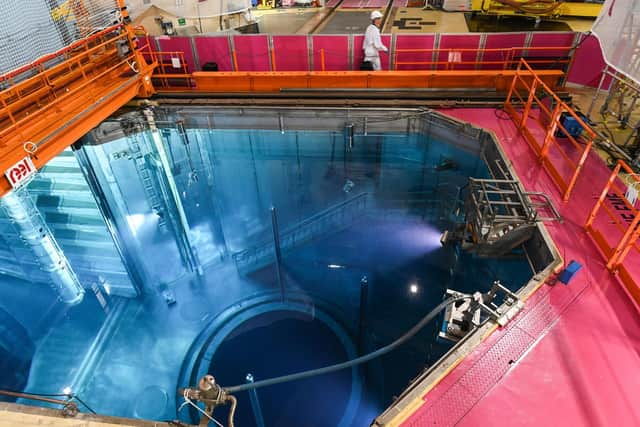Why nuclear reactors are not the future of energy despite what UK Government would have you think – Dr Richard Dixon
The UK's nuclear enthusiasts have been on another PR offensive, with announcements of new reactors and possible life extensions to old reactors. All of it denying the reality that nuclear is much too slow to build and much too expensive to be part of our future energy strategy.
The manoeuvres started with energy company EDF saying that they were looking to extend the lifetimes of their five existing nuclear power stations in the UK. This included the suggestion that the two reactors at Torness in East Lothian could continue operating until 2030. This cannot possibly be agreed since it was only two years ago that the developing cracks in the reactor cores forced EDF to move the closure date forward from 2030 to 2028. Even reaching that date depends on how quickly the cracking develops.
Advertisement
Hide AdAdvertisement
Hide AdThen the UK Government said that they would be building another big reactor and a series of small reactors. Energy Secretary Claire Coutinho called it “the biggest expansion in nuclear power for 70 years”. This time the government promises to approve a new reactor or two every five years from 2030. When Boris Johnson had a spurt of nuclear enthusiasm in 2022, he made the crazy promise to build a new one every year.


Further Hinkley delays?
The plans include proposals to relax planning rules for nuclear reactors, to allow small reactors to be built “almost anywhere”. Of course, these plans do not apply to the separate planning system in Scotland and any attempt to impose them would provoke a massive political fight.
Small modular reactors are not particularly small, definitely not cheap and unlikely to be built any time soon. And they are not doing well globally. Oregon company NuScale, poster child of the supposed nuclear renaissance, has just laid off nearly a third of their staff despite $600 million of US Government backing. A deal with power companies fell through when the estimated cost of their reactor design increased by 50 per cent.
On developments in the UK, the latest rumour from Somerset is that the Hinkley Point C reactors are going to be further delayed from the current guesstimate of summer 2027 and will now not be ready until the early 2030s. That’ll be 15 years after they were first supposed to be supplying electricity. Plans for similar reactors at Sizewell C in Suffolk require the UK Government and EDF to raise £20 billion of private finance. And now the government says there will be a third reactor, but are coy on exactly where and when this might be built.
Globally nuclear is in terminal decline. Renewable energy schemes constructed in just the last five years globally have generated more electricity than all the world’s nuclear reactors combined. And twice as much again is expected to be constructed in the next five years, taking renewables’ output to five times that of nuclear.
Of course, the motivation for this burst of coordinated PR is clear, the £20bn for Sizewell C hasn’t been raised so the UK Government is desperately trying to give the impression that it’s all go for nuclear in the UK. When it clearly isn’t.
Dr Richard Dixon is an environmental campaigner and consultant
Comments
Want to join the conversation? Please or to comment on this article.